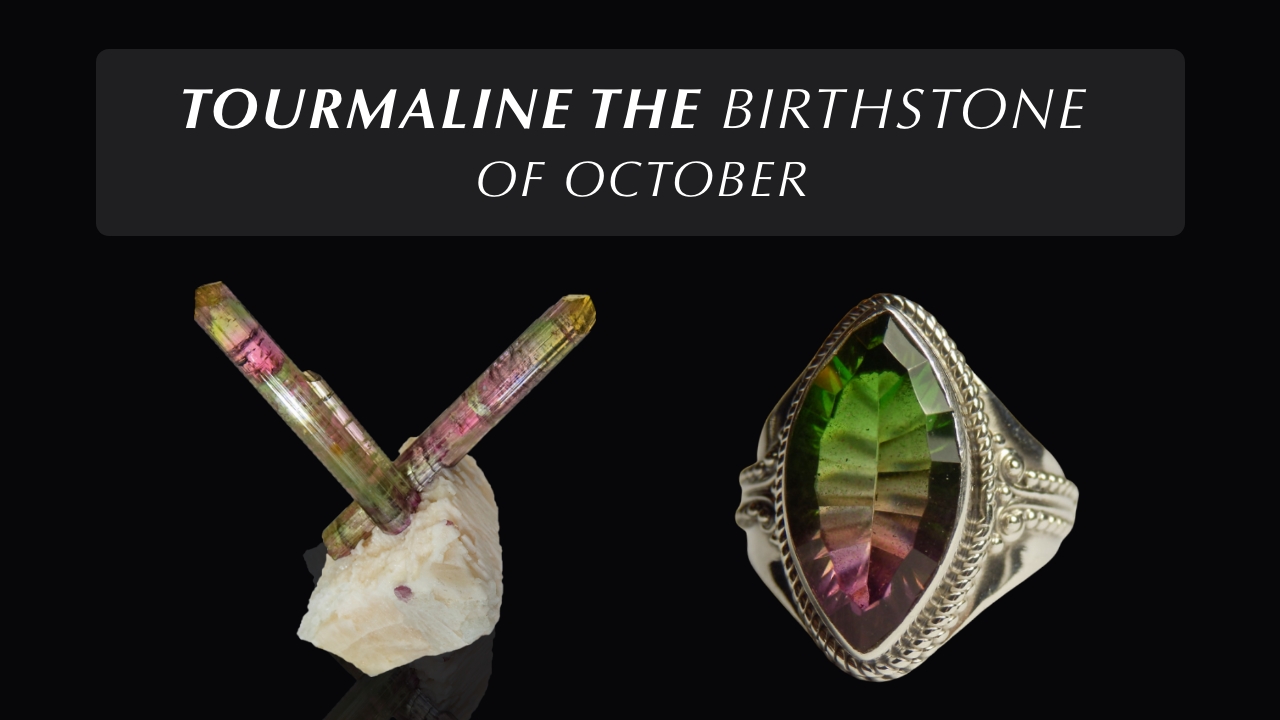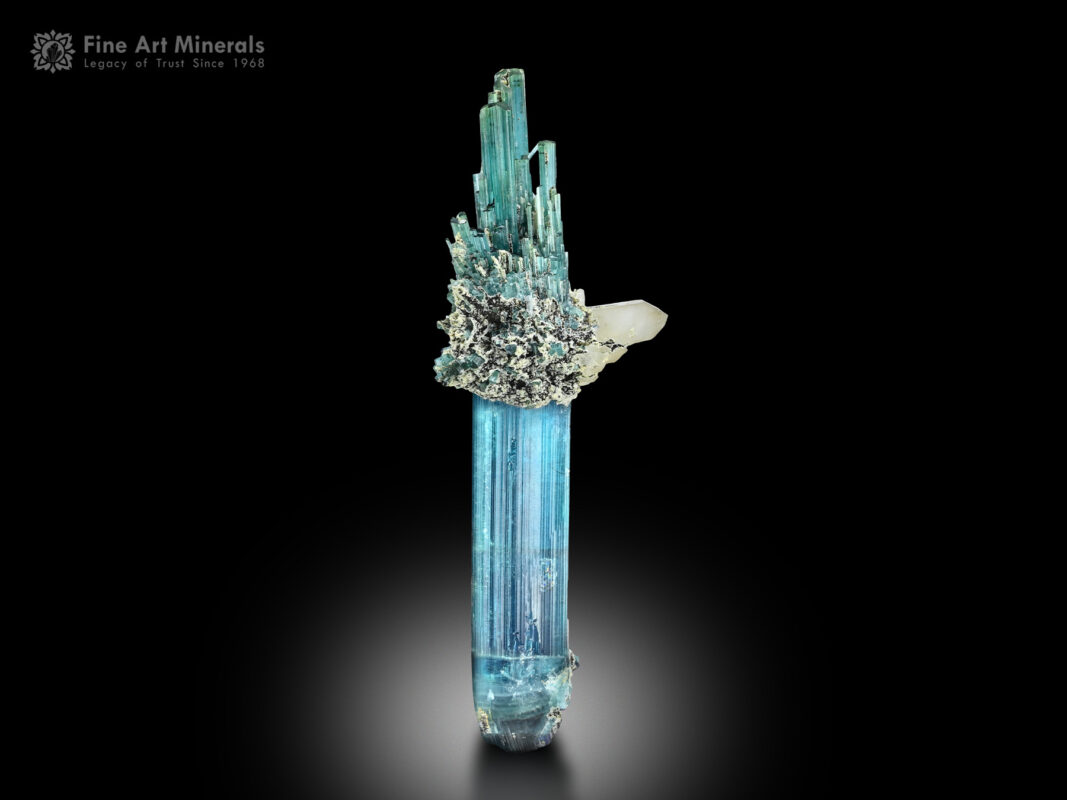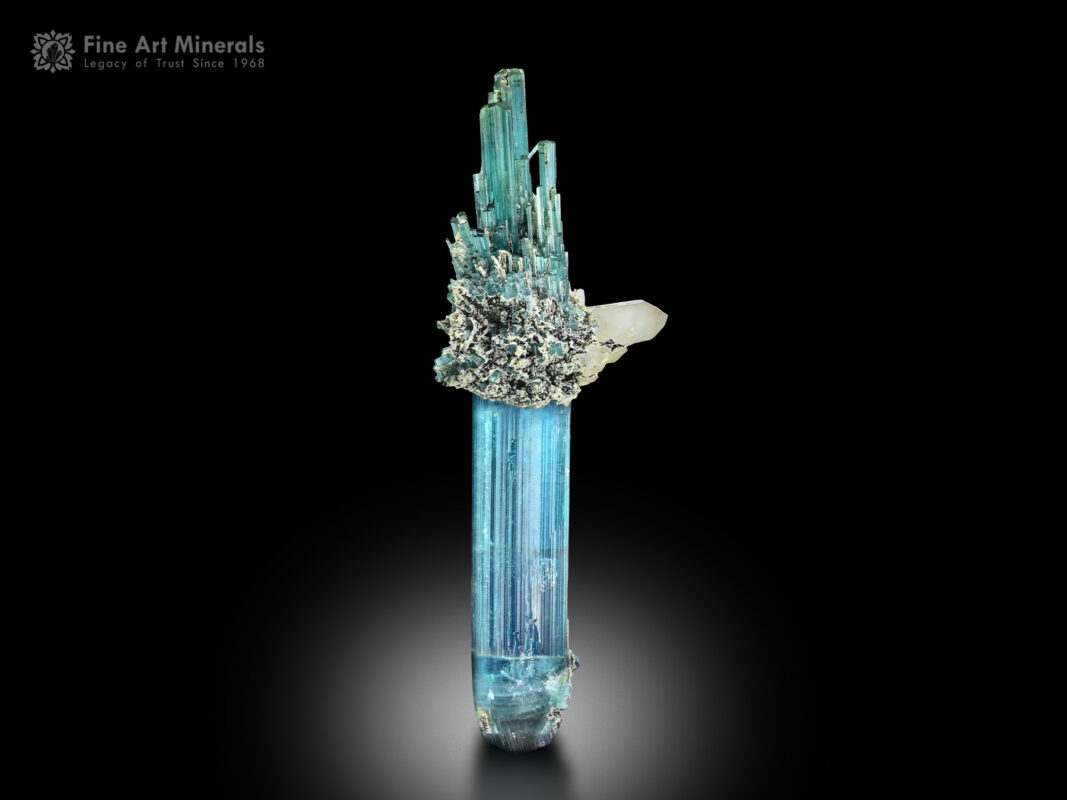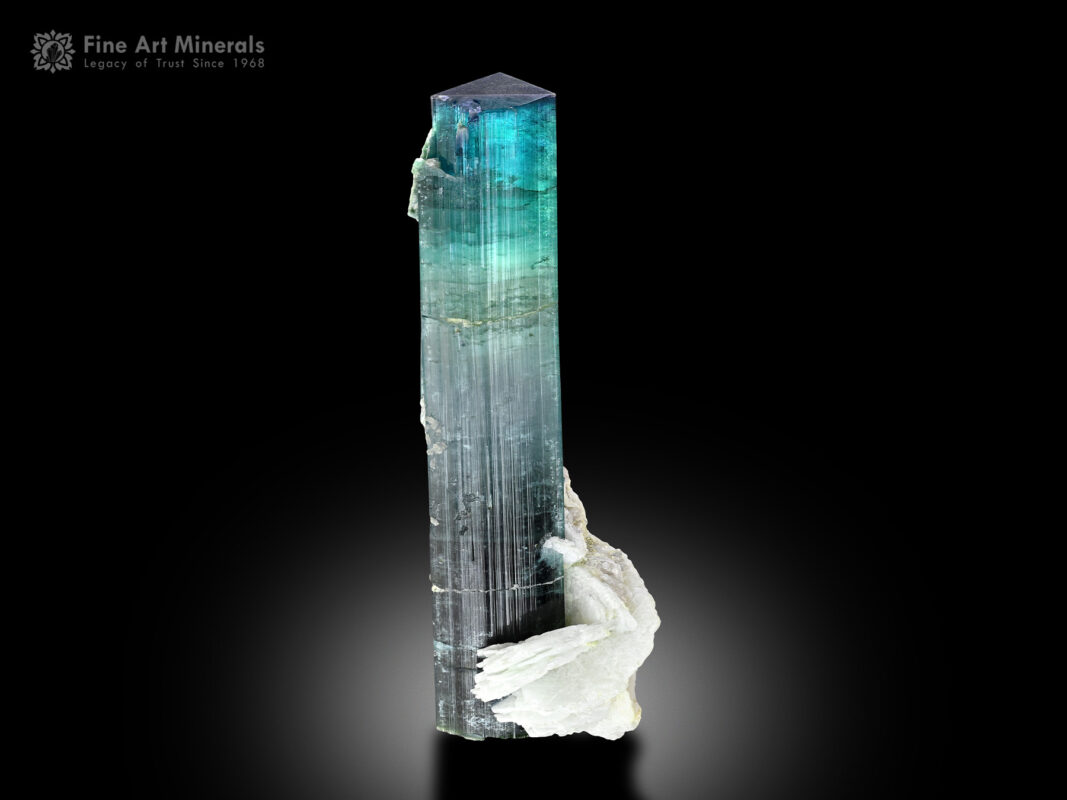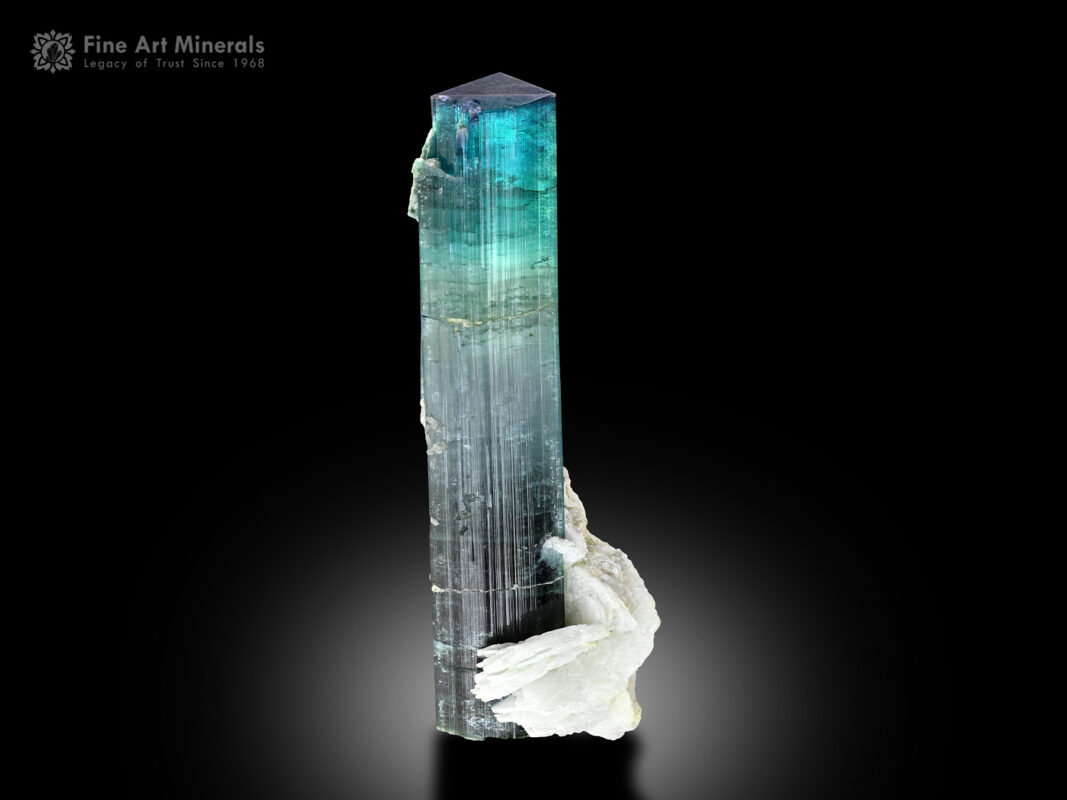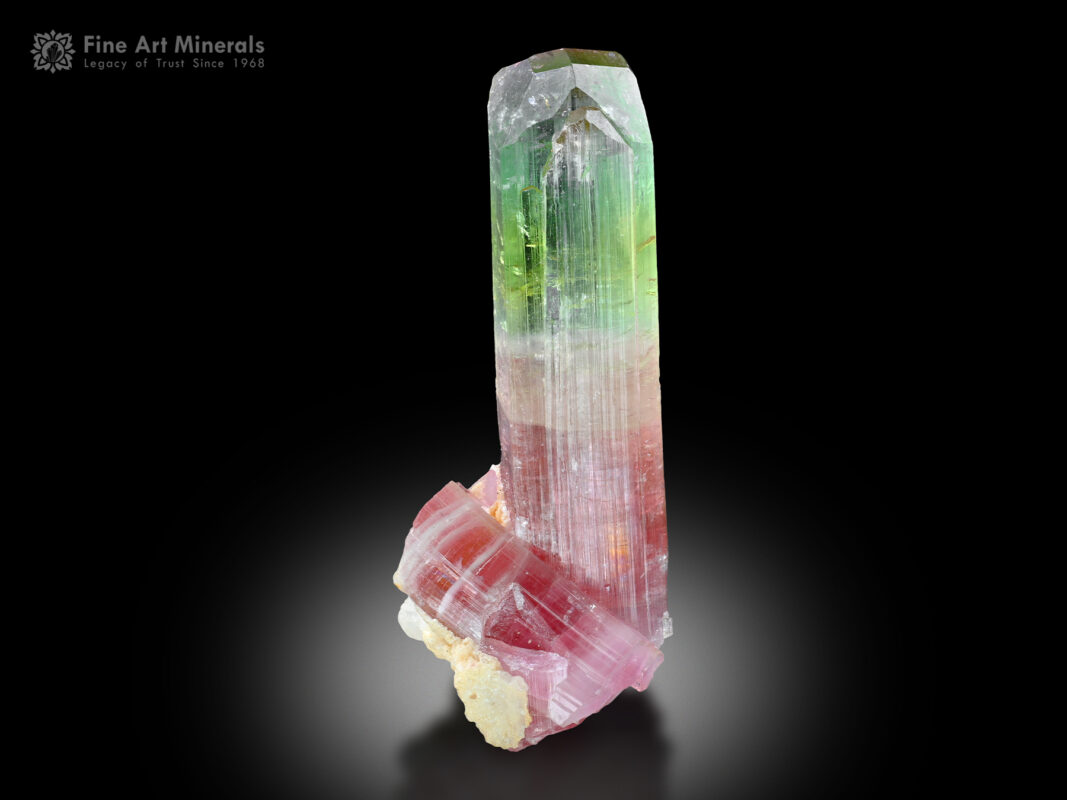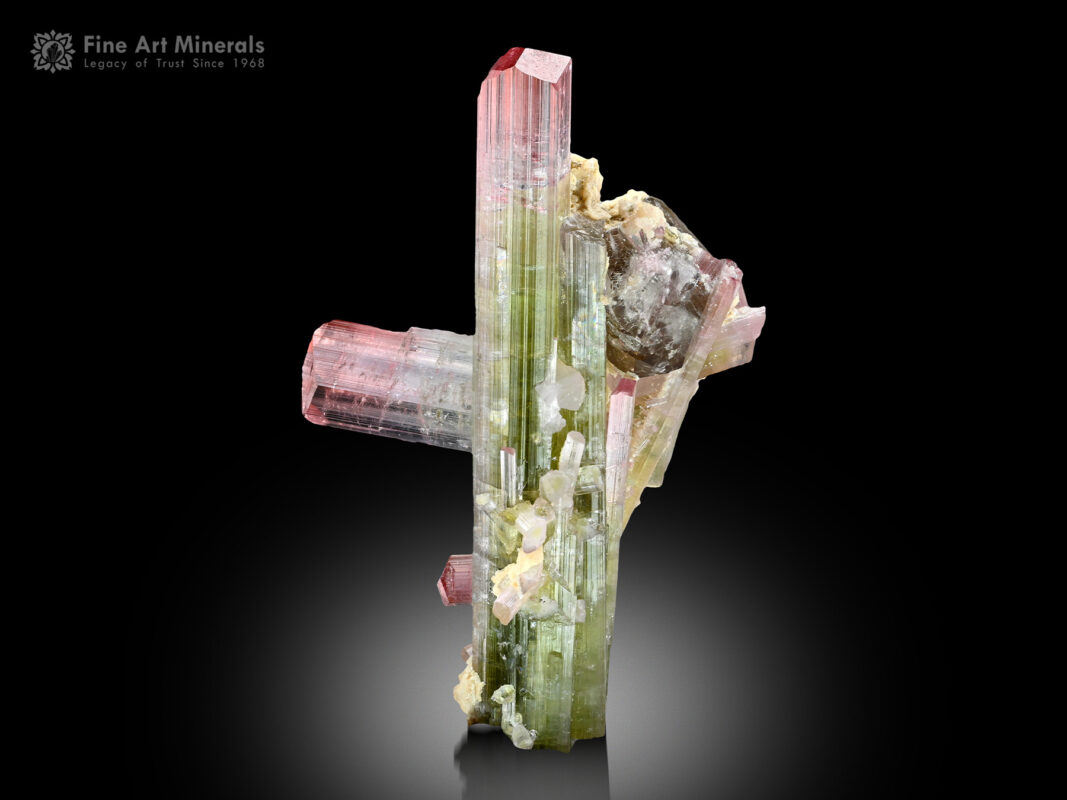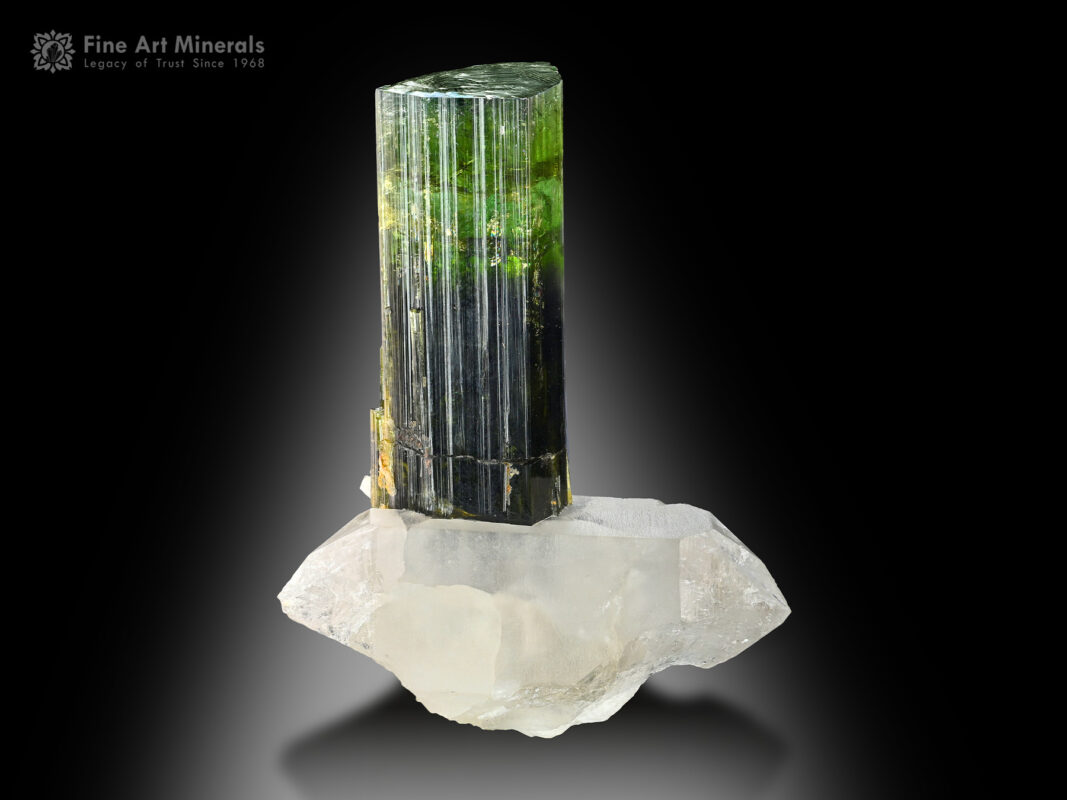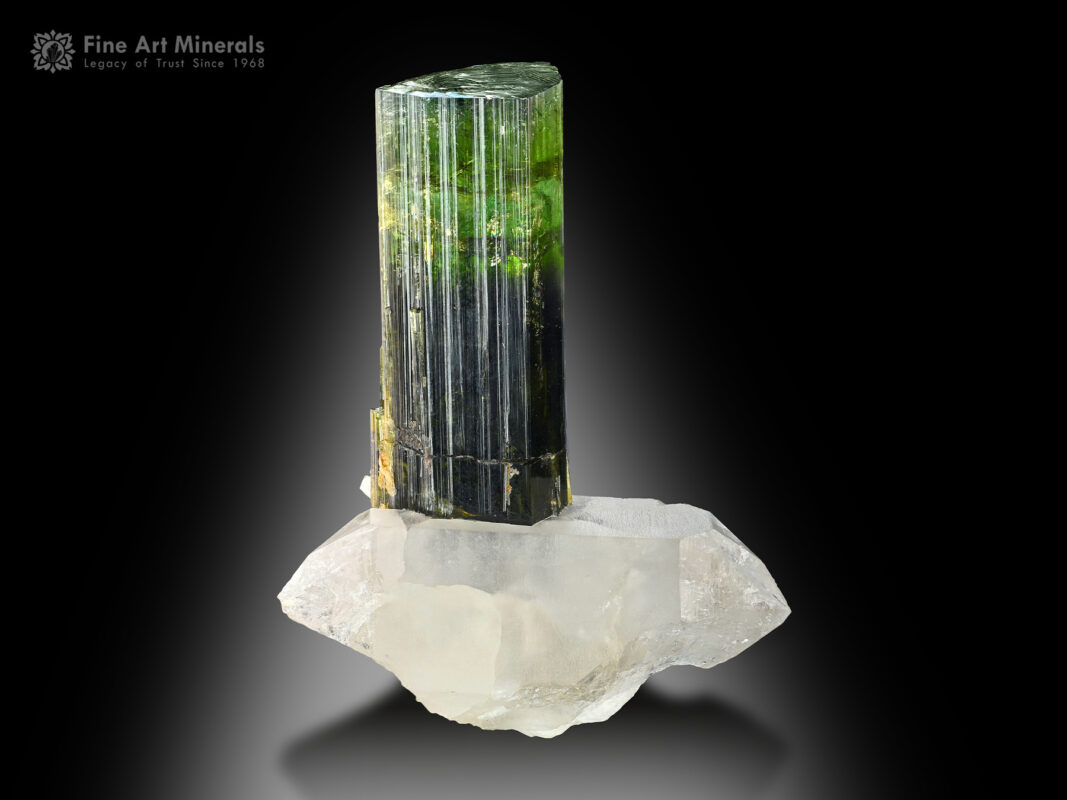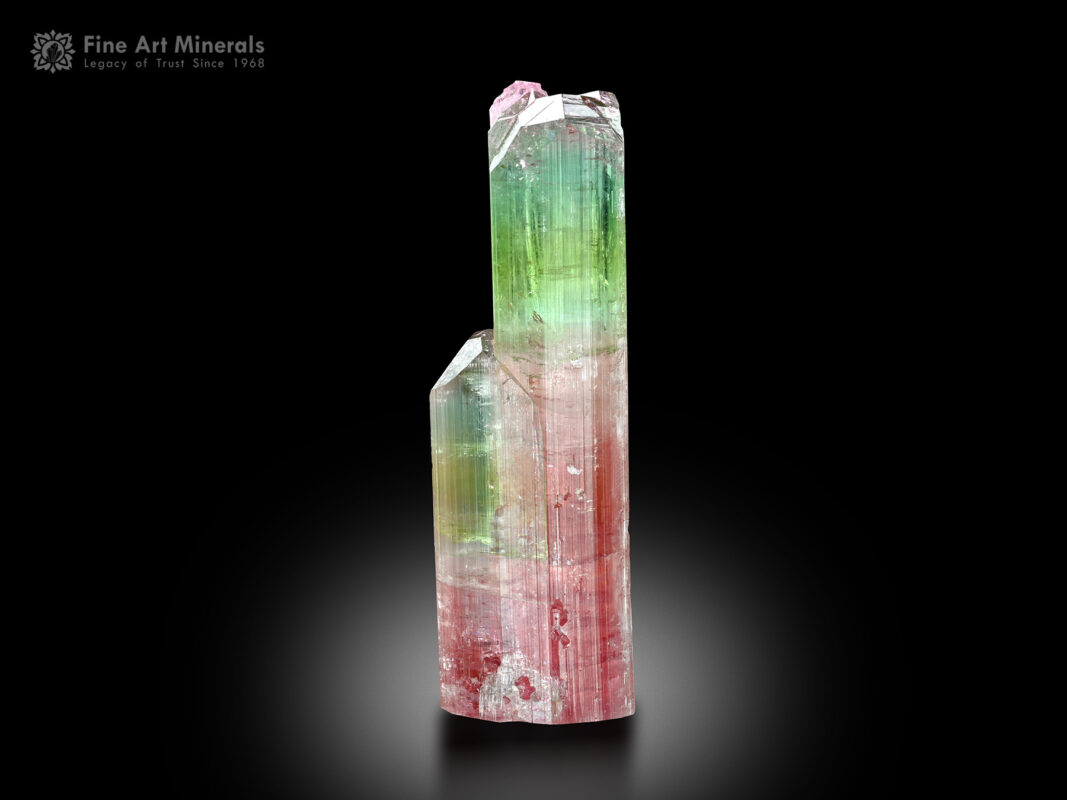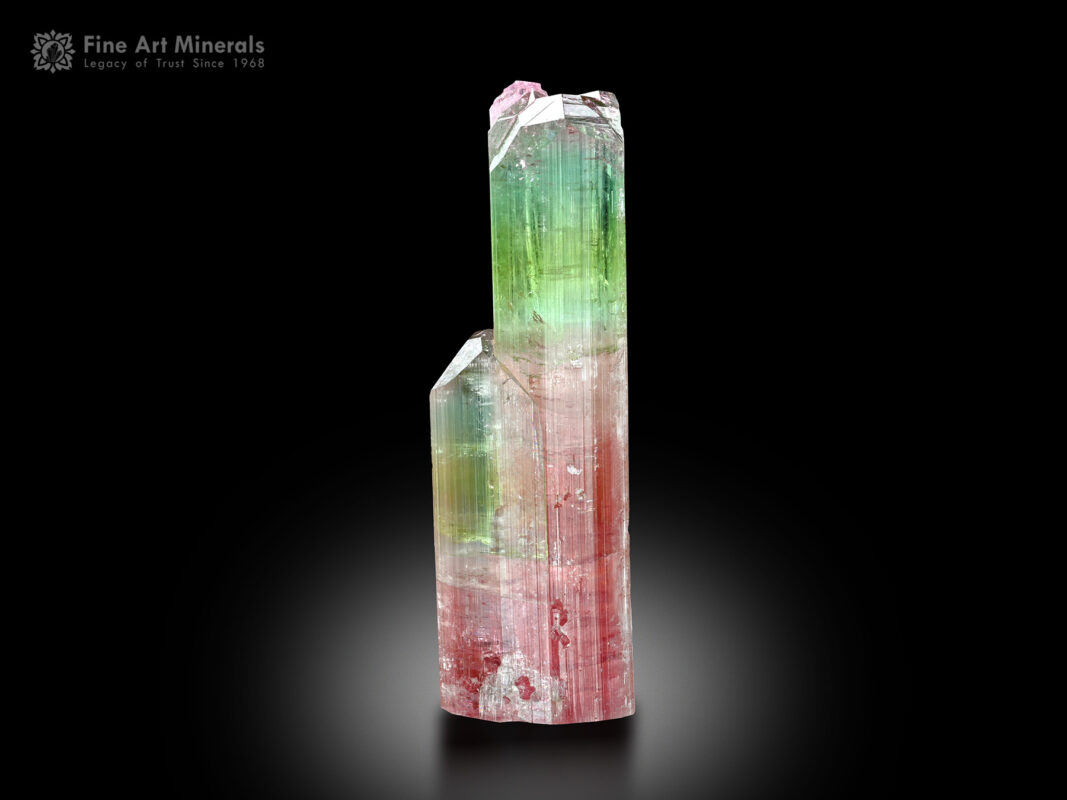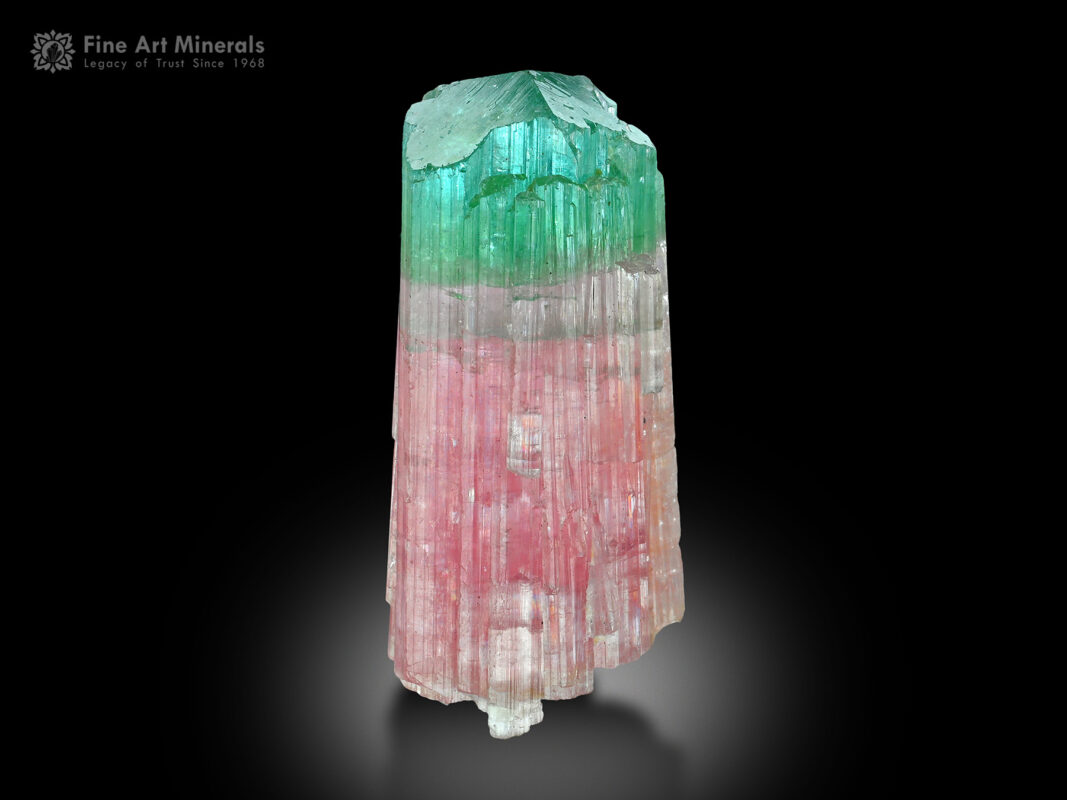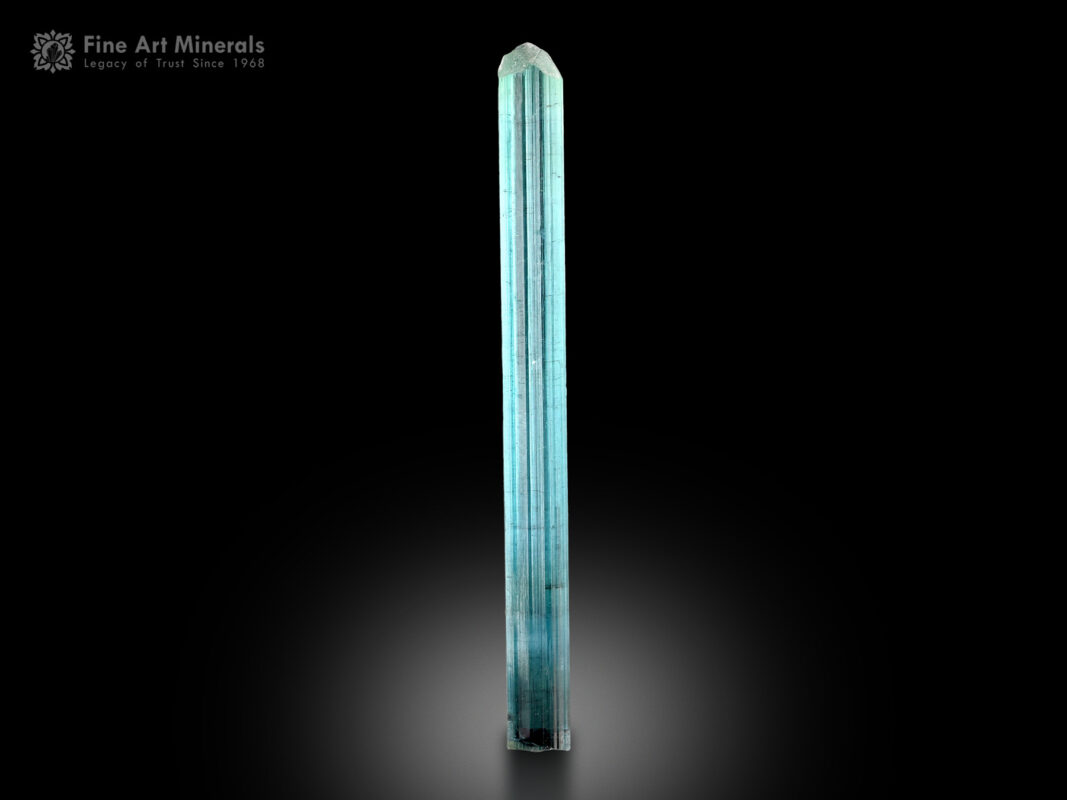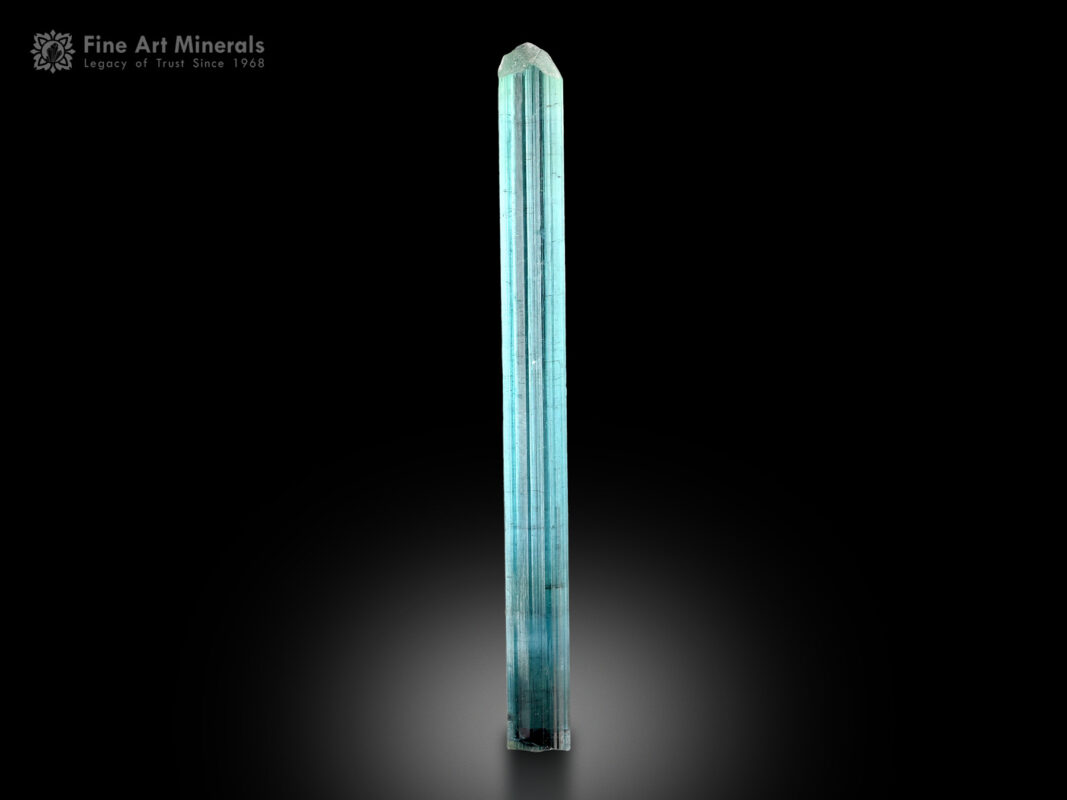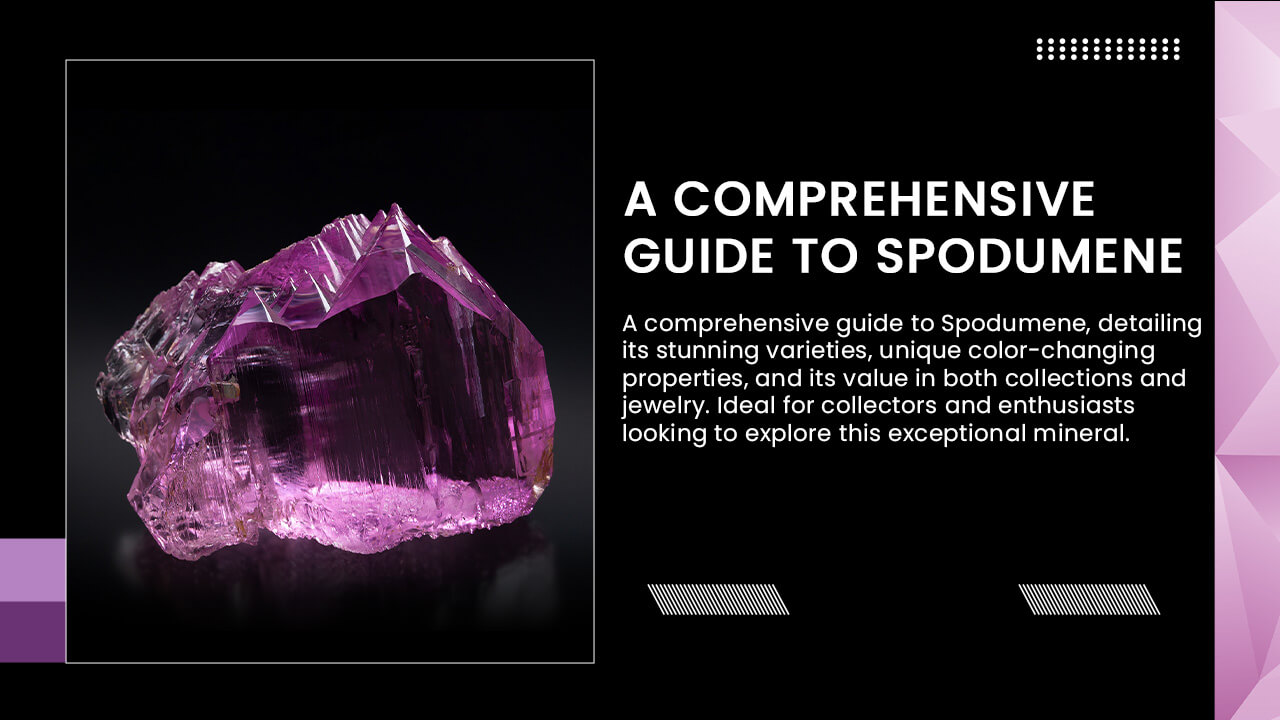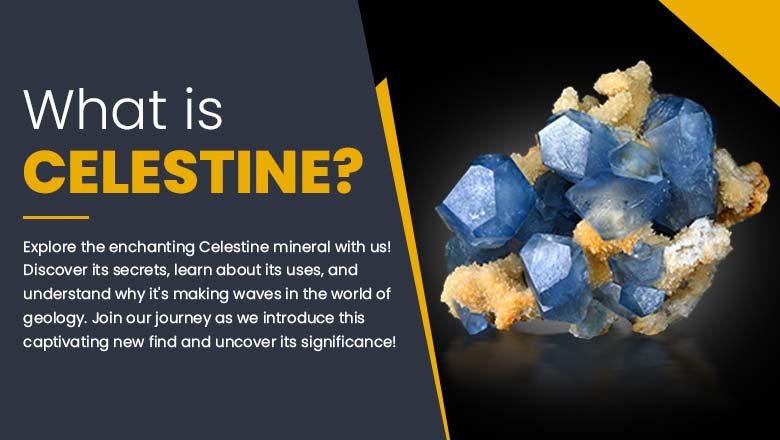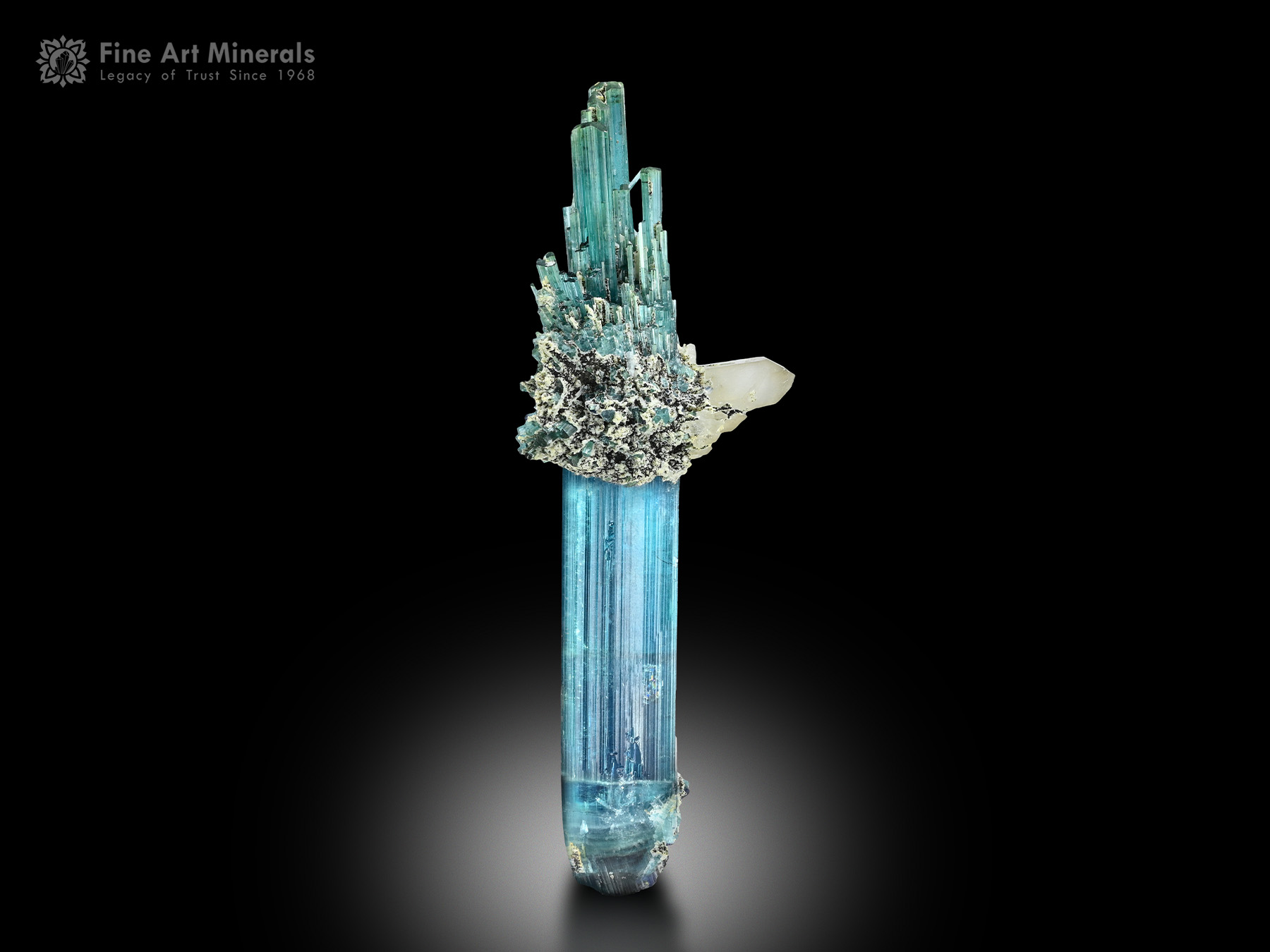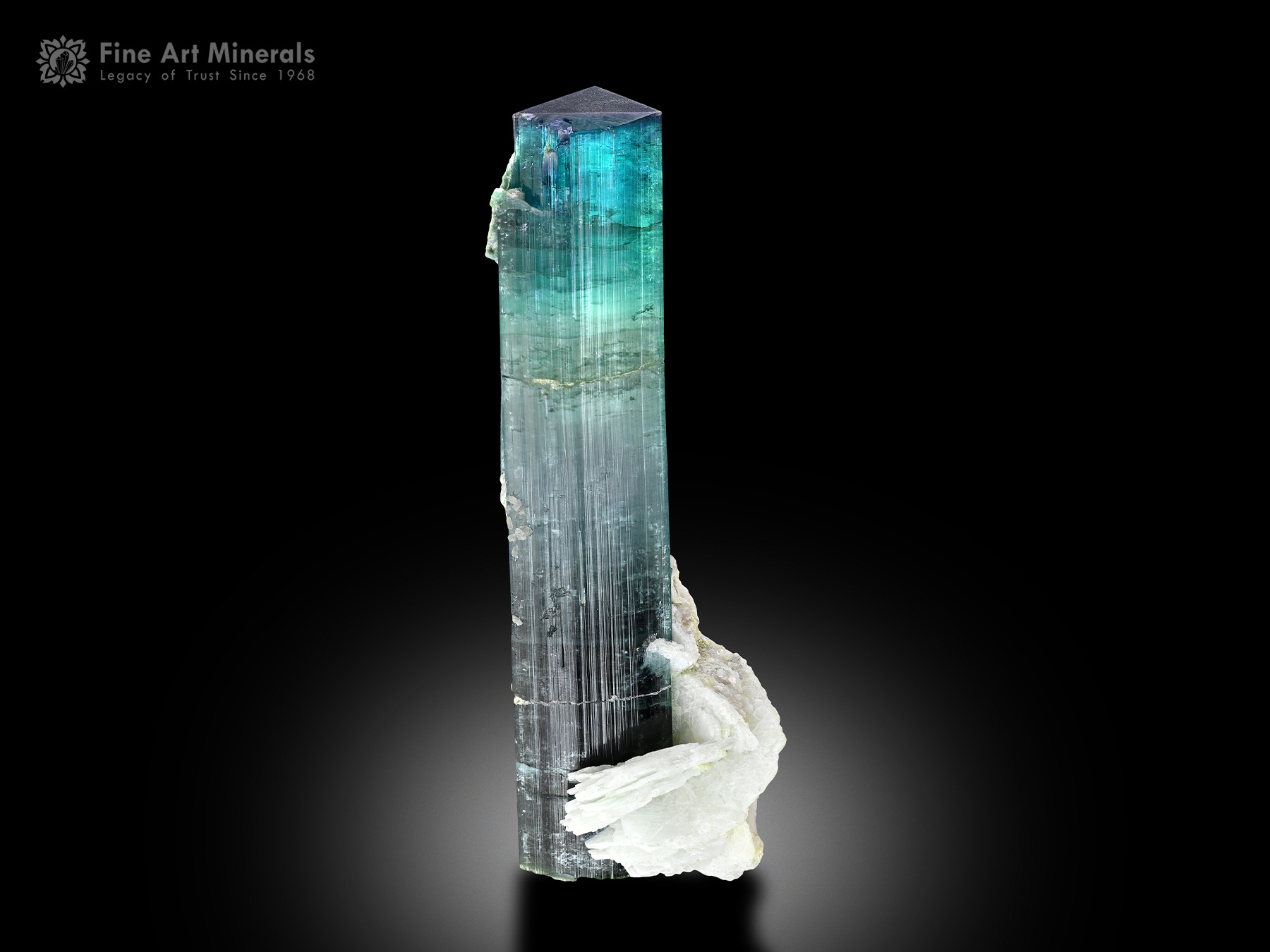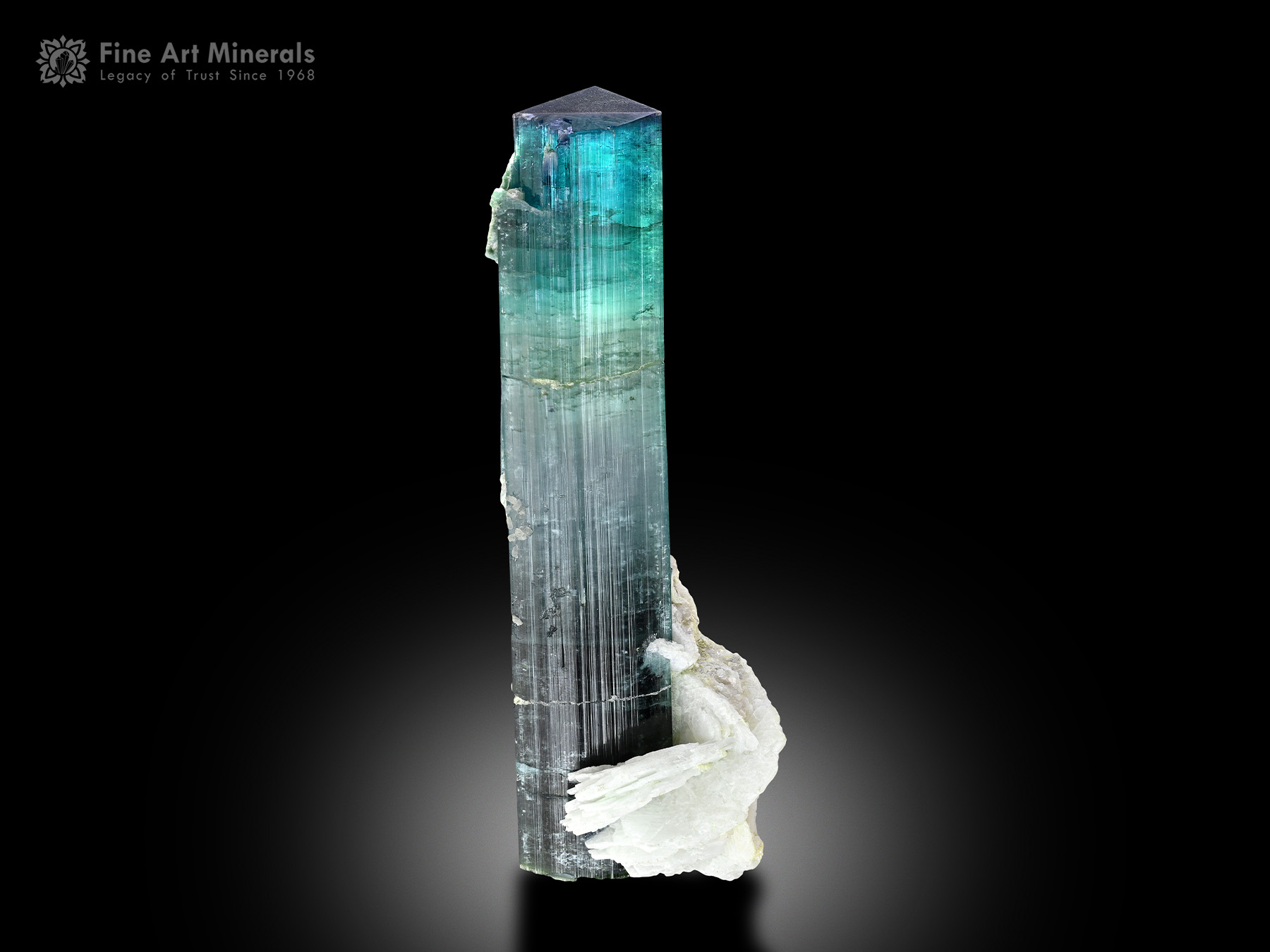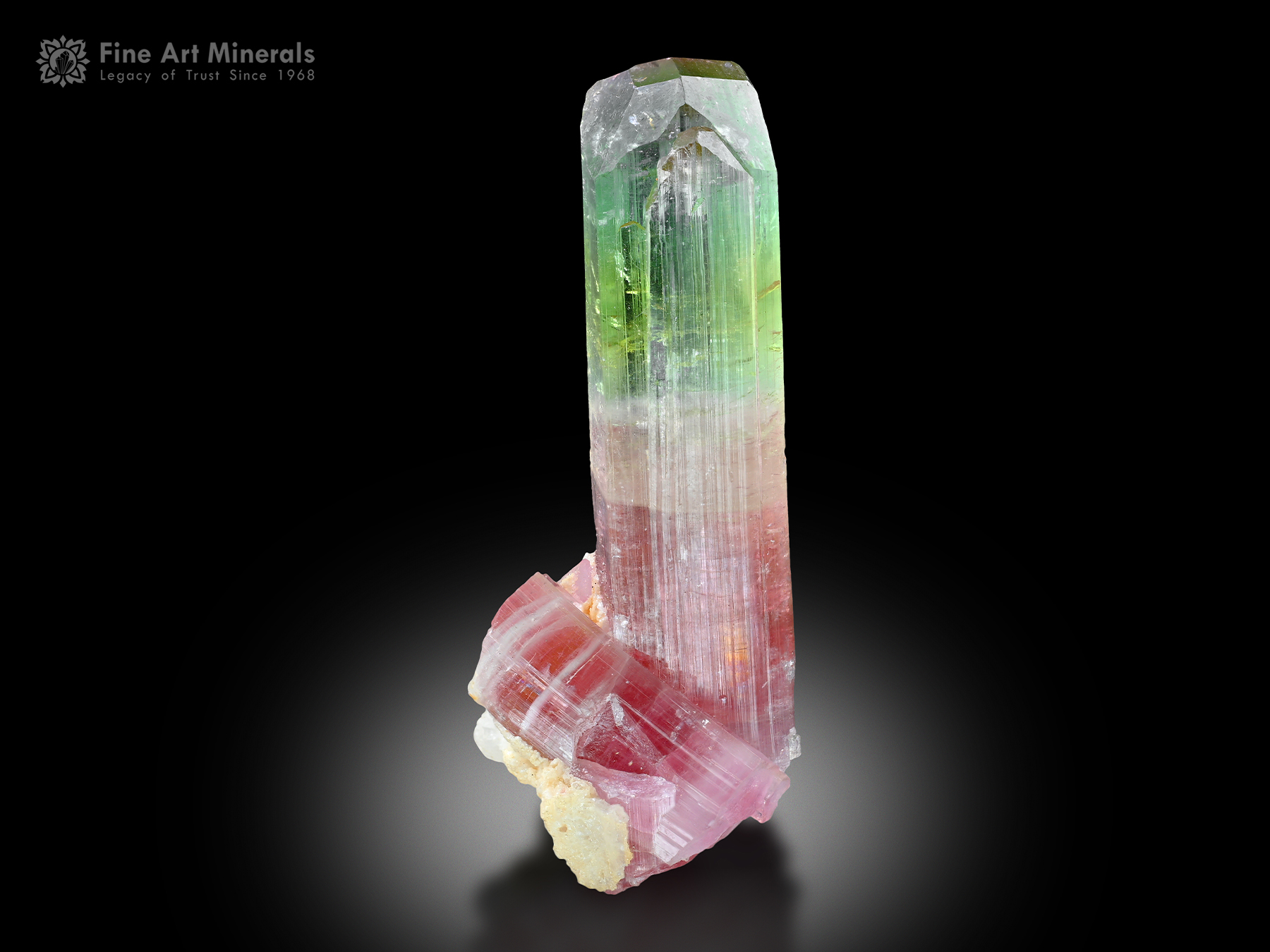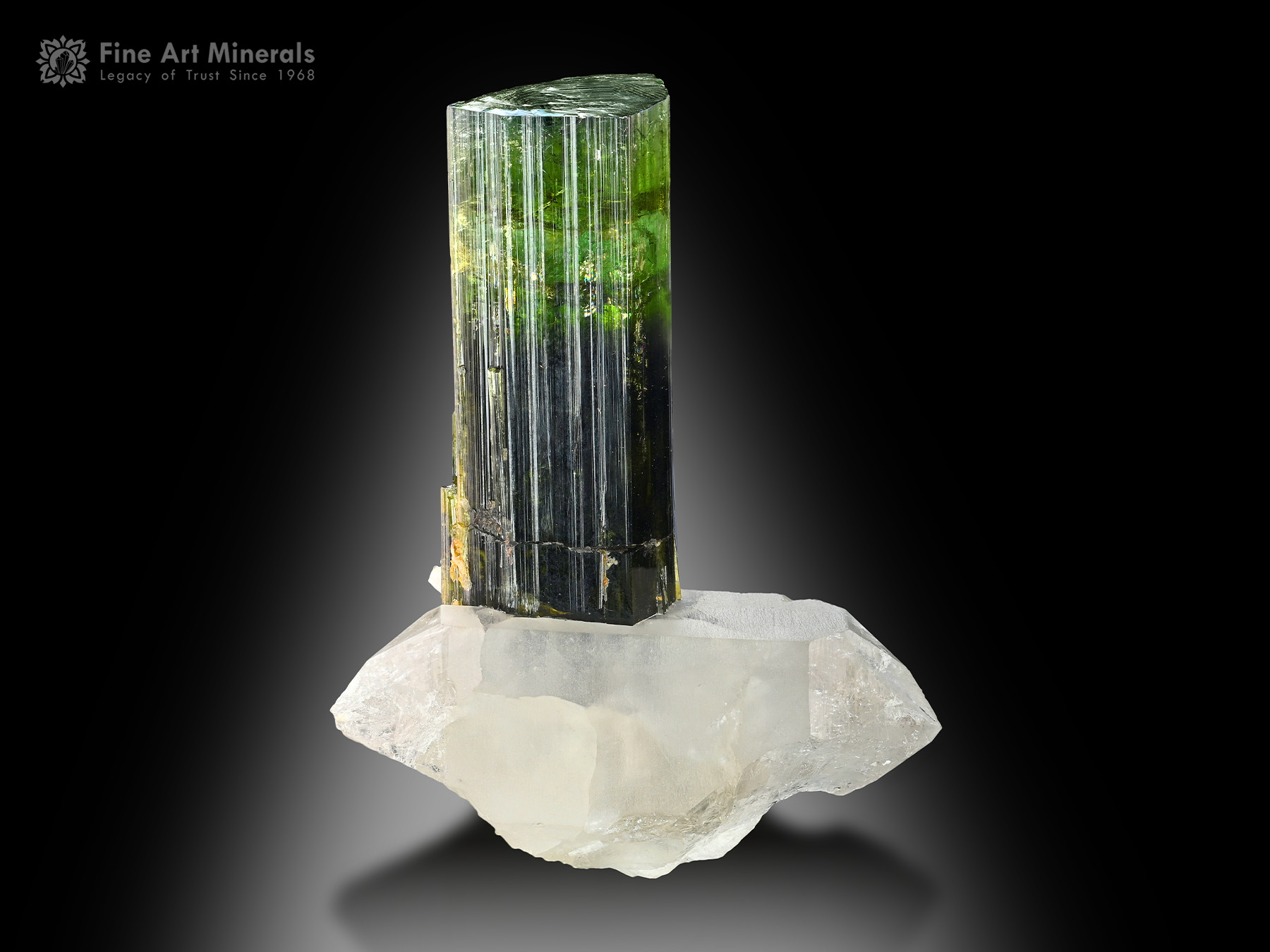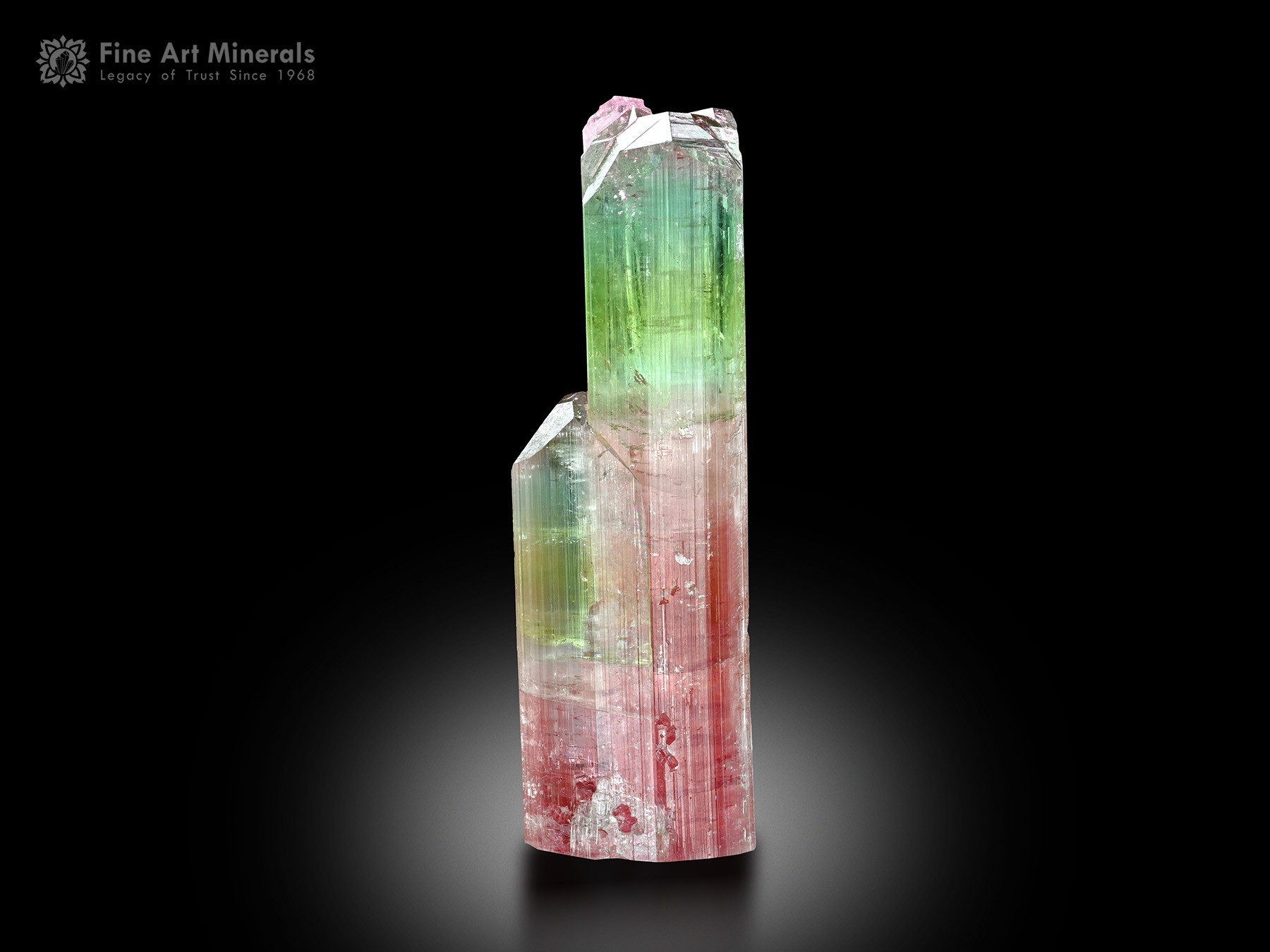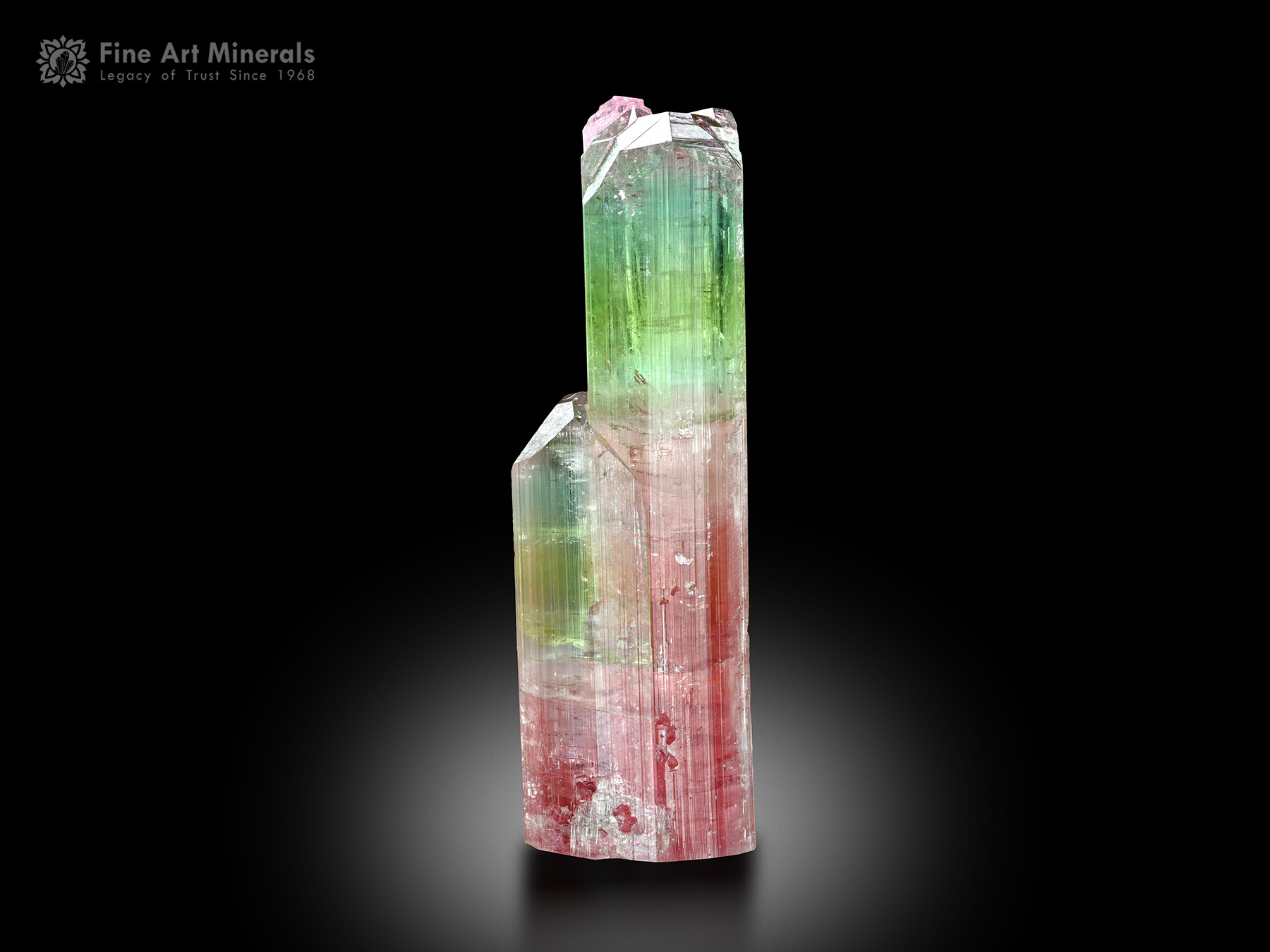In this article, we will delve into the world of Tourmaline the Birthstone of October, equipping you with the knowledge needed to choose the perfect piece for your collection.
From the enchanting colors and exceptional clarity to the precise cut and desirable carat weight, each aspect contributes to the overall value and allure of a tourmaline gemstone.
By understanding the different types of tourmaline available and identifying physical properties that indicate quality of tourmaline, you’ll be empowered to make a purchase that brings joy and satisfaction for years to come.
Table of Contents
ToggleWhat is Tourmaline (Birthstone of October)?
Tourmaline the birthstone of October, is a captivating gemstone renowned for its vibrant hues and unique crystal structure. This exquisite gem derives its name from the Singhalese word “turmali,” meaning “mixed gemstones.”
It is a complex borosilicate mineral that comes in a wide array of colors, making it a favorite among gem enthusiasts and jewelry designers alike. The exceptional diversity of tourmaline’s colors is due to its unique composition and trace elements.
This gemstone offers an extraordinary spectrum of colors, ranging from deep greens and pinks to rich blues, reds, and even mesmerizing multicolored variations known as “watermelon tourmalines.” Such a diverse color palette makes tourmaline highly sought after by both gem enthusiasts and jewelry designers.
One of the remarkable features of tourmaline is its pleochroism, where the gemstone exhibits different colors when viewed from various angles. This captivating optical property adds depth and allure to tourmaline jewelry, creating a dynamic visual experience.
Beyond its sheer beauty, tourmaline holds significant metaphysical properties. It is believed to inspire creativity, enhance energy flow, and provide protection against negative energies.
These characteristics, combined with its vibrant colors, make tourmaline a popular choice for those seeking not only a visually stunning gem but also one that carries deeper meaning.
History of Tourmaline
The history of tourmaline is a fascinating tale that spans centuries, capturing the attention of ancient civilizations and renowned figures throughout time. As we delve into the enchanting world of tourmaline, it becomes clear why this gemstone has left an indelible mark on human history.
Ancient civilizations, such as the Egyptians and the Romans, held tourmaline in high regard for its captivating beauty and believed it possessed mystical properties. They revered tourmaline as a gemstone that could channel positive energy and provide protection against negativity.
The gemstone’s rich colors and unique crystal formations made it highly sought after for decorative purposes and as a symbol of status and power.
One famous individual associated with tourmaline is Empress Dowager Tzu Hsi, the powerful ruler of China’s Qing Dynasty. She had a deep affinity for tourmaline and was often adorned with exquisite jewelry featuring this gemstone. Tzu His’s love for tourmaline further enhanced its popularity and elevated its status among the Chinese elite.
Throughout history, tourmaline’s popularity has continued to grow, captivating the imaginations of gem enthusiasts and collectors around the world. Today, it is celebrated as the birthstone of October, cherished for its kaleidoscope of colors that beautifully reflect the vibrant hues of autumn.
Colors and Varieties of Tourmaline
Tourmaline, the birthstone of October, is a gemstone that dazzles with its stunning array of colors and captivating varieties. One of the remarkable aspects of tourmaline is its extraordinary color spectrum.
This gemstone showcases an extensive range of hues, including vibrant greens, vivid pinks, rich blues, fiery reds, and enchanting yellows. These captivating colors are often found in a single tourmaline crystal, creating a striking play of shades and adding to its allure.
Among the different varieties of tourmaline, some notable ones include the rare Paraíba tourmaline, known for its intense neon blue and green hues. The Indicolite tourmaline displays captivating shades of blue, while Rubellite tourmaline showcases vibrant and deep pink colors.
There are stunning bi-color and tri-color tourmalines, such as the popular watermelon tourmaline, which exhibits a delightful combination of green, pink, and white colors reminiscent of its namesake.
Throughout history, various famous individuals have been captivated by the beauty of tourmaline. One such person is the renowned American jeweler Louis Comfort Tiffany, who incorporated tourmaline into his iconic Art Nouveau designs.
His appreciation for the gemstone’s range of colors and unique properties made tourmaline a significant feature in his exquisite jewelry creations.
Some Popular Varieties of Tourmaline Include
1. Green Tourmaline
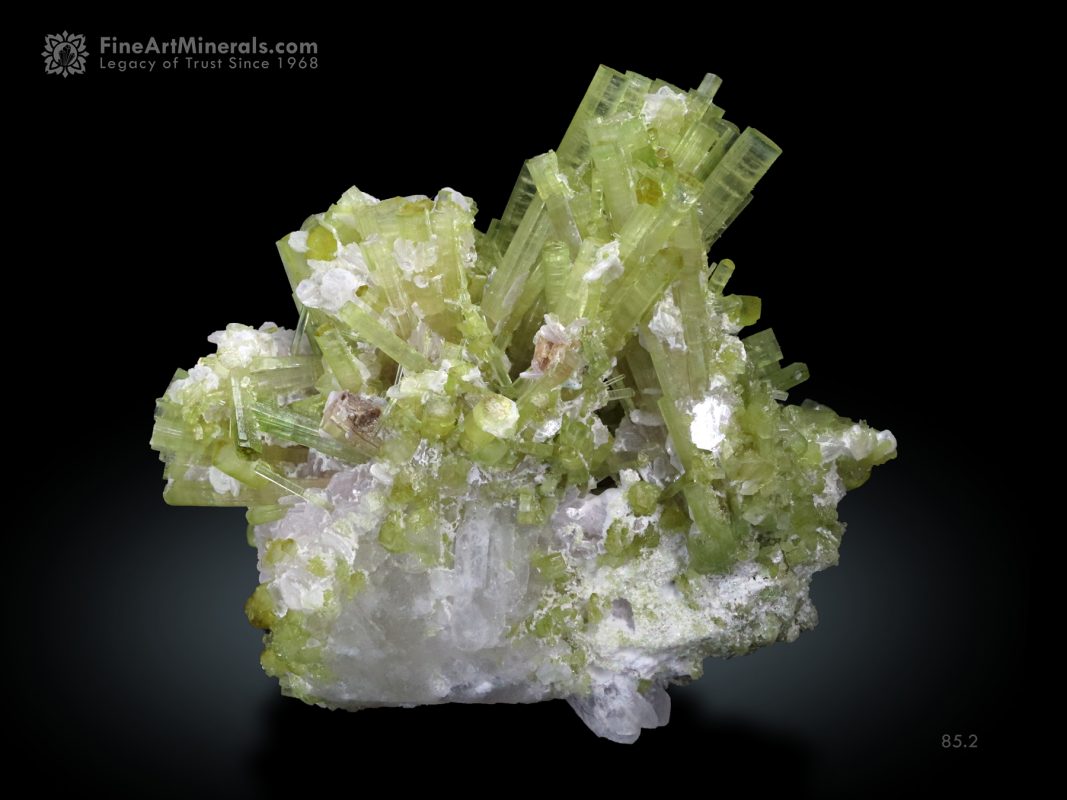
Known for its lush green hues, this variety symbolize abundance and prosperity.
2. Pink Tourmaline

Radiating feminine charm, pink tourmaline is associated with love, compassion, and emotional healing.
3. Watermelon Tourmaline
This unique variety showcases a delightful combination of green, pink, and white, resembling the cross-section of a watermelon. It represents harmony and balance.
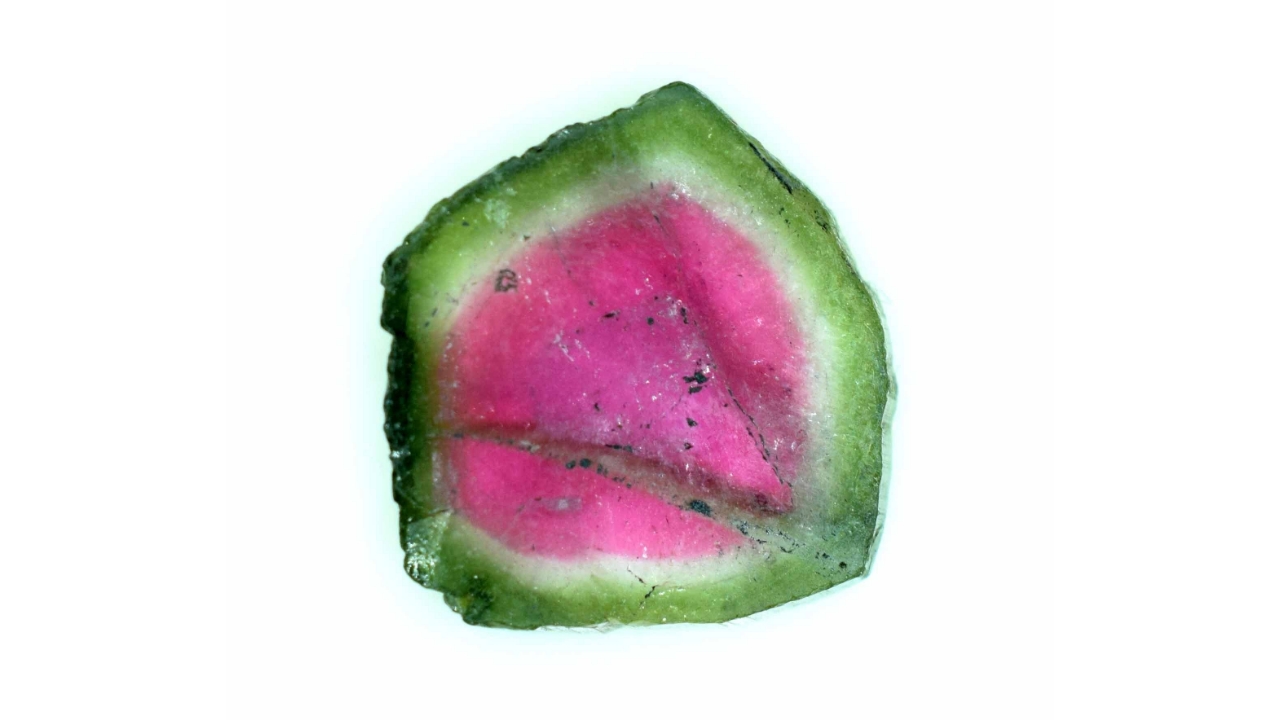
4. Paraiba Tourmaline
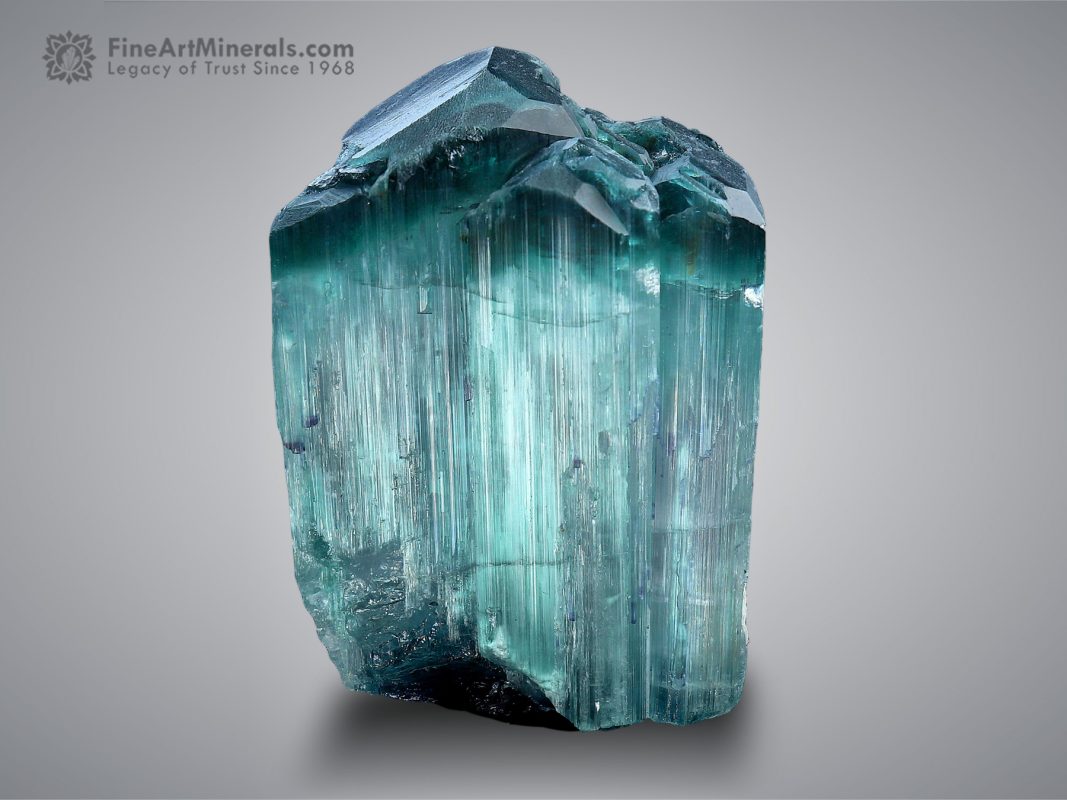
Highly sought after for its electrifying blue-green color, Paraiba tourmaline is a rarity known for its intense brilliance.
Significance as a Birthstone
Tourmaline holds great significance as the birthstone of October, representing those born during this enchanting autumnal month. Tourmaline is believed to bring balance, harmony, and positive energy to individuals born in October. It is said to promote self-confidence, creativity, and emotional well-being.
As October is a time of transition and reflection, tourmaline’s vibrant colors reflect the changing hues of nature, inspiring growth and personal transformation. The association between tourmaline and October dates back to ancient times when gemstones were linked to specific months and zodiac signs.
Embracing tourmaline as a birthstone connects individuals to a rich tradition and allows them to carry the essence of their birth month in a tangible and meaningful way.
Healing Properties of Tourmaline
Tourmaline is not only celebrated for its mesmerizing beauty but also revered for its reputed healing properties. In this SEO optimized article, we delve into the intriguing world of tourmaline’s healing abilities, exploring the gemstone’s unique energies and potential benefits.
Tourmaline is believed to possess a range of healing properties that can positively impact physical, emotional, and spiritual well-being. Different colors of tourmaline are associated with specific healing attributes. For instance, green tourmaline is said to promote vitality and rejuvenation, while pink tourmaline is believed to foster emotional healing and love.
This gemstone is thought to cleanse and purify energy, helping to remove negative influences and promote a sense of balance and harmony. It is also said to enhance intuition, creativity, and spiritual growth.
Use Of Tourmaline
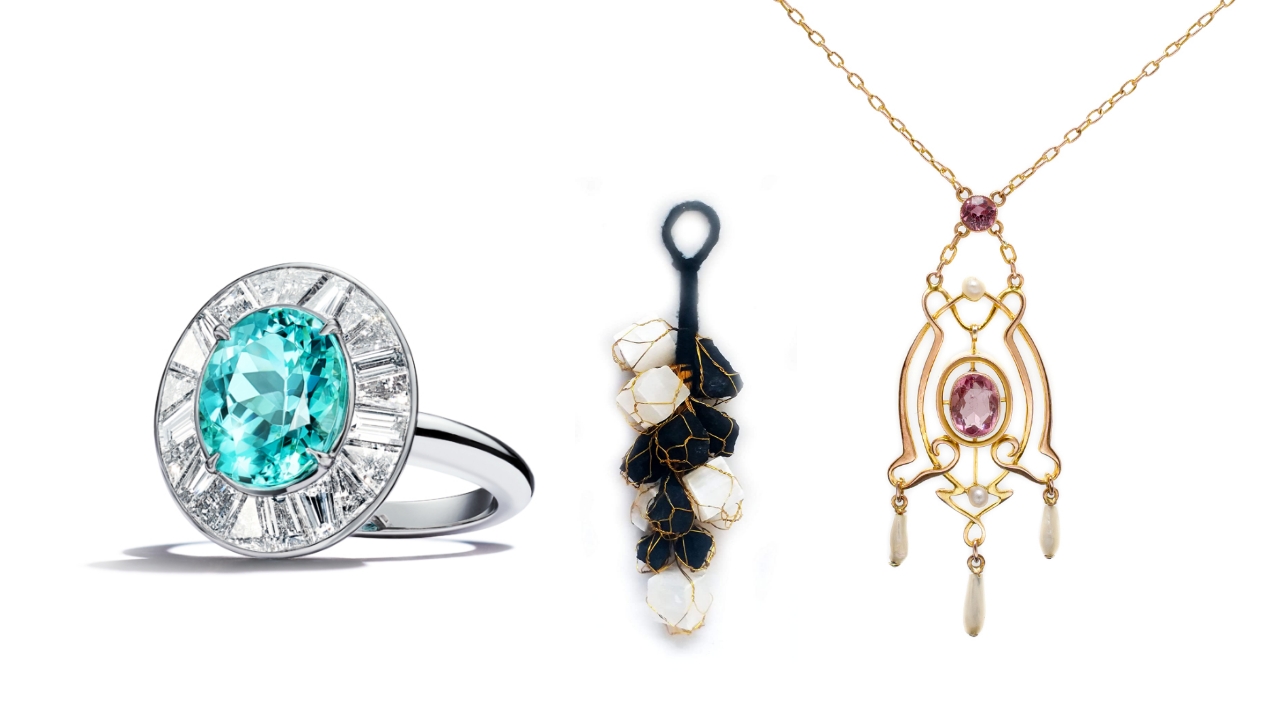
The remarkable beauty and versatility of tourmaline make it a sought-after gemstone for various purposes. we explore the diverse uses of tourmaline, ranging from exquisite jewelry creations to alternative energy applications.
Tourmaline’s vibrant colors and unique crystal structures make it a favorite among jewelry designers. From delicate necklaces and earrings to statement rings and bracelets, tourmaline brings a captivating allure to any piece of jewelry. Its versatility allows for endless design possibilities, catering to both classic and contemporary tastes.
Beyond its use in jewelry, tourmaline has found applications in alternative medicine and energy-related fields. Due to its piezoelectric and pyroelectric properties, tourmaline is used in devices that generate negative ions, which are believed to have various health benefits, such as improved mood and enhanced air quality.
Tourmaline also plays a role in the technological sector, being used in specialized equipment like infrared cameras and pressure sensors.
Facts and Information About Tourmaline
Following are the Facts and Information of Tourmaline
1. Origins of Tourmaline
Tourmaline is formed in diverse geological settings around the world, including Brazil, Afghanistan, Nigeria, and the United States. It crystallizes in pegmatites, metamorphic rocks, and even volcanic environments.
2. Adolescence
Adolescence is a captivating optical phenomenon exhibited by certain tourmaline varieties, such as moonstone. It creates a soft shimmer or iridescent glow reminiscent of moonlight, adding an ethereal touch to the gemstone’s beauty.
3. Cultural Significance
Throughout history, tourmaline has held cultural significance in various civilizations. It has been cherished as a protective talisman, a symbol of wealth and power, and an embodiment of love and creativity.
4. Zodiac Sign
Tourmaline is associated with the zodiac sign Libra, which falls between September 23 and October 22. Libra is known for its appreciation of beauty, balance, and harmony, aligning perfectly with tourmaline’s enchanting qualities.
Chemical Formula of Tourmaline
Tourmaline belongs to a complex group of minerals with varying chemical compositions. Its general chemical formula is (Na,Ca)(Li,Mg,Al,Fe)_3Al_6(BO_3)_3Si_6O_18(OH,F)_4. This composition determines the gemstone’s color and properties.
Physical Properties of Tourmaline : Color, hardness, luster, Source, Size
Following are the Physical Properties of Tourmaline
1. Color
Tourmaline exhibits a wide spectrum of colors, including vibrant blues, reds, yellows, greens, pinks, and even multicolored variations. The gemstone’s color is influenced by trace elements and can vary within a single crystal..
2. Hardness
Tourmaline has a hardness ranging from 7 to 7.5 on the Mohs scale. This makes it a durable gemstone suitable for everyday wear in jewelry, ensuring its longevity and resistance to scratches.
3. Luster
Tourmaline displays a vitreous to subadamantine luster, giving it a brilliant and reflective appearance. The gemstone’s luster enhances its visual appeal and adds to its overall beauty.
4. Source
Tourmaline is found in numerous locations worldwide. Some notable sources include Nigeria, Madagascar, Brazil, Afghanistan, and the United States. Each location produces a tourmaline with unique characteristics and colors.
5. Size
Tourmaline crystals can vary in size, ranging from small crystals suitable for delicate jewelry to larger specimens used for statement pieces and collector’s items. The size of the gemstone can influence its value and visual impact.
Care Tips for Tourmaline Jewelry
Following are the tips for cleansing and caring Tourmaline Jewelry
- Avoid exposure to harsh chemicals and abrasive substances that can damage the gemstone’s surface.
- Clean tourmaline jewelry gently using a mild soap and warm water solution, followed by a soft cloth or brush.
- Store tourmaline jewelry separately from other gemstones to prevent scratches and potential damage.
- Remove tourmaline jewelry before engaging in activities that may subject it to impact or excessive force.
- Protect tourmaline jewelry from extreme temperatures and prolonged exposure to direct sunlight to prevent color fading.
- Schedule regular professional cleaning and inspection to ensure the longevity and beauty of your tourmaline jewelry.
Conclusion
Tourmaline the Birthstone of October is a fascinating gemstone with a rich history and a wide range of colors. As the birthstone for October, it holds a special significance for those born in that month, symbolizing creativity and emotional balance.
With its unique properties and stunning appearance, tourmaline makes an excellent choice for jewelry and other decorative pieces. Whether you are looking to add to your personal collection or to gift someone special, consider the beauty and meaning of tourmaline as the perfect choice for October.
So, explore the world of tourmaline today and discover the many ways this precious stone can enhance your life!
—
So, this is the complete information about Tourmaline the Birthstone of October, I hope you have gone through it.
Or If you want to know about any other minerals stones or want to purchase a stone. you can contact us Here.
You can check out our SHOP also.
Thanks for Reading.

